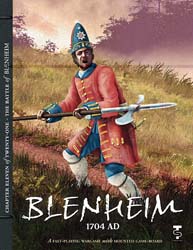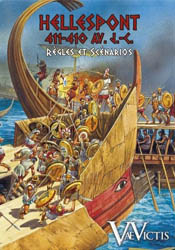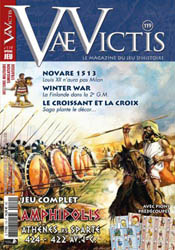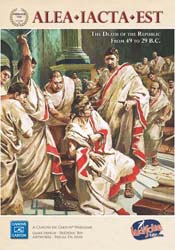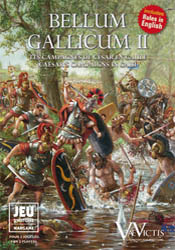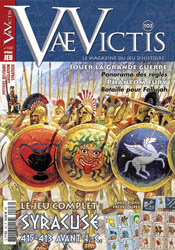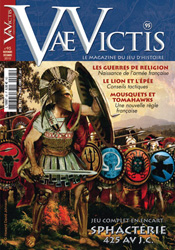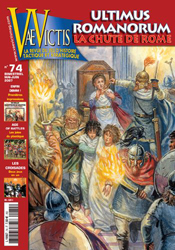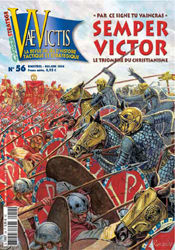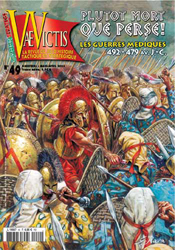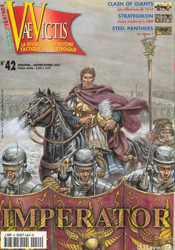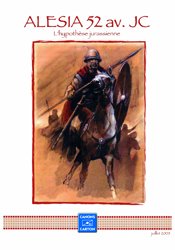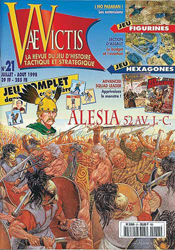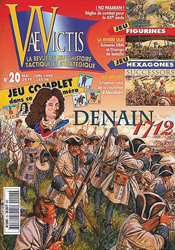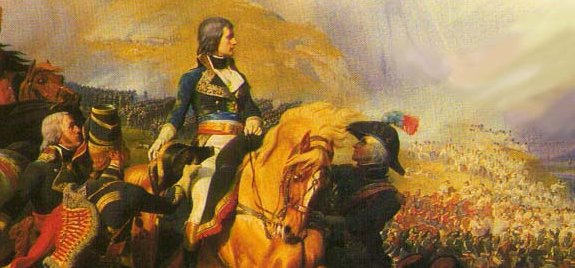 Jours de gloire
Jours de gloire
Website dedicated to Frédéric Bey wargames and articles
Other games
Wargames published by Casus Belli, Vae Victis, Canons en Carton, Ludifolie Editions and Turning Point Simulations
Peloponnesian War series
- Hellespont, 411-410 BC, published in Vae Victis #139 (2018), focuses on the victorious campaigns of Alcibiades against the Spartan Mindarus. In three great battles, Cynossema, Abydos and Cyzicus, the athenian fleet takes back control of the straits and Alcibiades proclaims his status as saviour. Hellespont is characteristic of an particularly equally balanced situation, even if Athenian commanders have more experience than their rivals. That time, the operations are principally naval and give the Persian army the opportunity to intervene directly. One game turn covers one months. The game includes one 16 pages rules booklet (14,4x21 cm), one 29,7x41 cm Map (30 land zones, 23 sea zones, 8 ports and 3 rear bases), one counter sheet of 108 die-cut counters, one historical scenario and a "What if?" Sscenario.
- Amphipolis, 424-422 BC is a historical game for two players covering the battles and operations carried out by the Peloponnesian expeditionary corps led by the Spartan general Brasidas, whose intent was to conquer the Athenian colony of Amphipolis, as well as the efforts of the Athenians to prevent him from doing so. One game turn covers three months. The game includes one 16 pages rules booklet (14,4x21 cm), one 29,7x41 cm Map (27 land zones, 3 sea zones, 8 operational zones and 3 rear bases), one counter sheet of 108 die-cut counters, 4 historical scenarios including one campaign game. A player wins if the citadel of Amphipolis and the 8 operational zones contain a garrison belonging to his side.
- Syracuse, 415-413 BC covers the land and naval battles as well as the siege of Syracuse during the Peloponnesian War. It appears as the inserted game of Vae Victis #103 Special Game Edition. Syracuse is a two players game: Athens and allies vs. Syracuse and allies.One game turn covers three months.The game includes one 16 pages rules booklet (14,4x21 cm), one 29,7x41 cm Map (27 land zones and 12 sea zones), one counter sheet of 108 die-cut counters (68 leaders and combat units, 22 stratagems counters and 18 makers), one historical scenario and a "What if?" scenario including Alcibiades as main Athenian leader.
- Sphacteria, 425 BC is a two-player wargame, published in Vae Victis #95 (2010), about the land and naval battles of Pylos and Sphacteria, during the first phase of the Peloponnesian War. The map is divided into 27 sea or land areas. The game also includes a sheet of 67 counters. Each strength point represents 1 trireme, 25 hoplites, 50 peltasts or 100 archers. The game also features a number of "strategem" chits. To achieve victory, one player has to control the fortress of Pylos and the island of Sphacteria, using his fleet and his land units while taking care of his supply.
Imperator series
Imperator has been nominated by Vae Victis readers as the best of the 50 first games published in this magazine (see Vae Victis #50, May-June 2003).
The series includes 4 games using the same core system, with howewer lot of specific rules for each of them. One player defends the interests of Roman empire (the "legal" one), while the other defends those of their enemies (barbarians and usurpers). The players' roles may be swapped during the game. :
- Imperator (161 AD to 217 AD) is a strategic wargame for 2 players published Vae Victis #42 (2001), with an extension in Vae Victis #43. It covers all the campaigns of Rome against its ennemies, at a strategic level, from Marcus-Aurelius to Caracalla. Civil wars are also part of the game.
- Semper Victor (305 AD to 363 AD) is a strategic wargame for 2 players that is inserted in Vae Victis #56 (2004). It covers all the campaigns of the 4th Century, at a strategic level, from Constantin to Julian the Apostate. Civil wars ans usurpations are also part of the game. In hoc signo vinces!
- Ultimus Romanorum (405 AD to 490 AD) is a strategic wargame for 2 players published Vae Victis #74 (2007), with an extension in Vae Victis #75 and Vae Victis Hors Série #10. It covers the campaigns that unfolded in the Roman Empire, starting with the Great Invasions of the 5th century, and concluding with the final fall of the Western Empire (generally considered to be the deposition of Romulus Augustulus in 476 AD). Civil wars, usurpations and barbarian kingdoms rising are also part of the game.
- Alea Iacta Est (2013) is a strategic historical game for two players. It narrates the civil wars that tore the late Roman Republic to shreds and paved the way for the establishment of the Principate. The period covered extends from Caesar's crossing of the Rubicon with soldiers of the XIII Legion (12 January, 49 B.C.) to Octavianus's closing of the doors of the Temple of Janus (11 January, 29 B.C.), the act that symbolized the return of peace. One player defends the interests of Caesar, his allies, his partisans and his successors. The other defends the interests of his adversaries. The roles of the two players may be reversed during the game.
Alesia
I have designed two games about Alesia, with the same rules set and counters but with two different maps:
- Alesia 52 BC is a wargame for 2 or 3 players published in Vae Victis #21 (1998). It is based on the "official" location of Alesia (today Alise-Sainte-Reine).
- Alesia 52 BC, the Jurassian Hypothesis is a wargame (for 2 or 3 players) published by Canons en Carton (2005). This game does not pretend to provide a response to the question of finding the site of the decisive battle between Julius Caesar and Vercingetorix. It simply proposes a new sort of " What if ?" : how does one explain the sequence of events in the battle if it had occurred at the Jurassian site discovered by André Berthier (today Syam / Chaux-des-Crotenay)?
Let's now entertain ourselves by comparing the situation and the nature of the fighting with the two maps (the site of Alise and the site of Syam / Chaux-des-Crotenay) and let's forge an opinion.
Non series games
- Blenheim 1704 rates as decisive because this cost Louis XIV the chance to knock the Hbasbourg out of the War of Spanish Succession early. Instead, it would be his Bavarian allies who would lose out and become vassals to Vienna. The game has been published by TPS (2019) in the series inspired by Mitchell and Creasy's classic of military history, « Twenty Decisive Battles of the world ». Blenheim 1704 focuses on the battlefield area itself, with each side having two distinct commands and forces. Players will command the varied forces of each side, with British, Dutch, Austrians, Prussians, Danes, and various German allies on one side and French, Bavarians, and even Irish fighting for Louis XIV. The rules are a development of those designed for Denain 1712.
- Bellum Gallicum is the first wargame I ever designed. It has been published in Casus Belli magazine #68 and #69 in 1992. The game covers the Gallic Wars (58 to 50 BC) at operationnal level. It allows, year after years, to simulate the campaigns of Julius Caesar against the Gallic tribes, those who would support them (the Britons) and those that were a threat (the Germanic tribes). An upgraded version of this game, Bellum Gallicum II, which contains in particular new developments of the rules relating to combats, is now available by VaeVictis Wargame Collection.
- Denain 1712 is a wargame for 2 or 3 players published in Vae Victis #20 (1998). In the summer of 1712 Eugene of Savoy launched an offensive against French line of forts in the Spanish Netherlands. But Marshal Duc Claude de Villars, the able commander of Louis XIV's army made a quick march and cut the allied supply line at Denain. Here, Eugene had placed a large force under the Dutch general, Earl of Albemarle. On July 24, Villars fell on this allied army and drove it into the Schelde. Eugene could not come in time to prevent a loss of 8000 men, at a cost to the French of only 500. The battle of Denain was the last serious battle of the War of Spanish Succession. This victory saved the kingdom of France.
- Suffren of the India is a wargame for 2 playerd published in Vae Victis #34 (2000). It is dedicated to the incredible naval campaign in India (1782-1783), where two equally able admirals fought each other: Hugues for the English side, Suffren for the French side.
- Plutôt Mort que Perse ! (Rather Dead Than Persian!) is a wargme for two players publisehed in Vae Victis issue #49 (2003). This game depicts the Persian wars in Greece between 490 and 480 BC. One player controls the army of the free Greek cities, the other the Persian invasion forces. Each turn (3 months time) has a randomly-determined number of action points which one spends by activating individual generals and admirals and their commands. Each strength point represents 200 to 1000 men. Each naval point represents 20 to 40 battle or transport ships. The map is divided into land zones each representing one province and naval zones. The game also features a number of "strategem" chits, allowing special actions (Treason, Reconnaissance, Storms at Sea, etc). There are three scenarios, covering the Ionian revolt against Persia and each of the two Persian Wars. Eleuthéria!
- The Trojan War is a (small) wargame, published in Vae Victis #66 (2006), related to Homer's Iliad and Odysseus and to Virgile's Eneid. It also deals with the complementary events described by Quintus of Smyrnaeus in his Posthomerica book. A new version of the rules (version 2.0) is available since March 2010 on the Download page.
Rate these games on Boardgamegeek!

Videos
Reviews
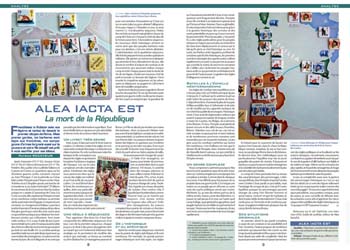
Review and analysis of Alea Iacta Est, The Death of the Republic siège in magazine Vae Victis #116 (April 2014).

Review of Alea Iacta Est in magazine Guerres et Histoire #17 (February 2014).
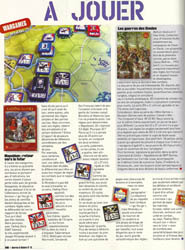
Review of Bellum Gallicum II in magazine Guerres et Histoire #13 (June 2013).
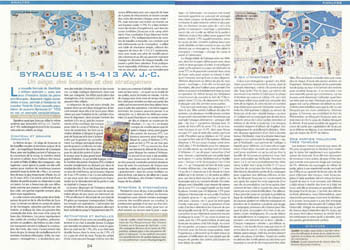
Review and analysis of Syracuse 415-413 av. J.-C., un siège, des batailles et des stratagèmes in magazine Vae Victis #106 (September 2012).
"Delicta maiorum inmeritus lues, Romane, donec templa refeceris aedisque labentis deorum et foeda nigro simulacra fumo."
Horace
